23 March 1778 Monday
Vases, Candelabra, Grave Stones, Sarcophagi. Tripods, Lamps and Ancient Ornaments volume II
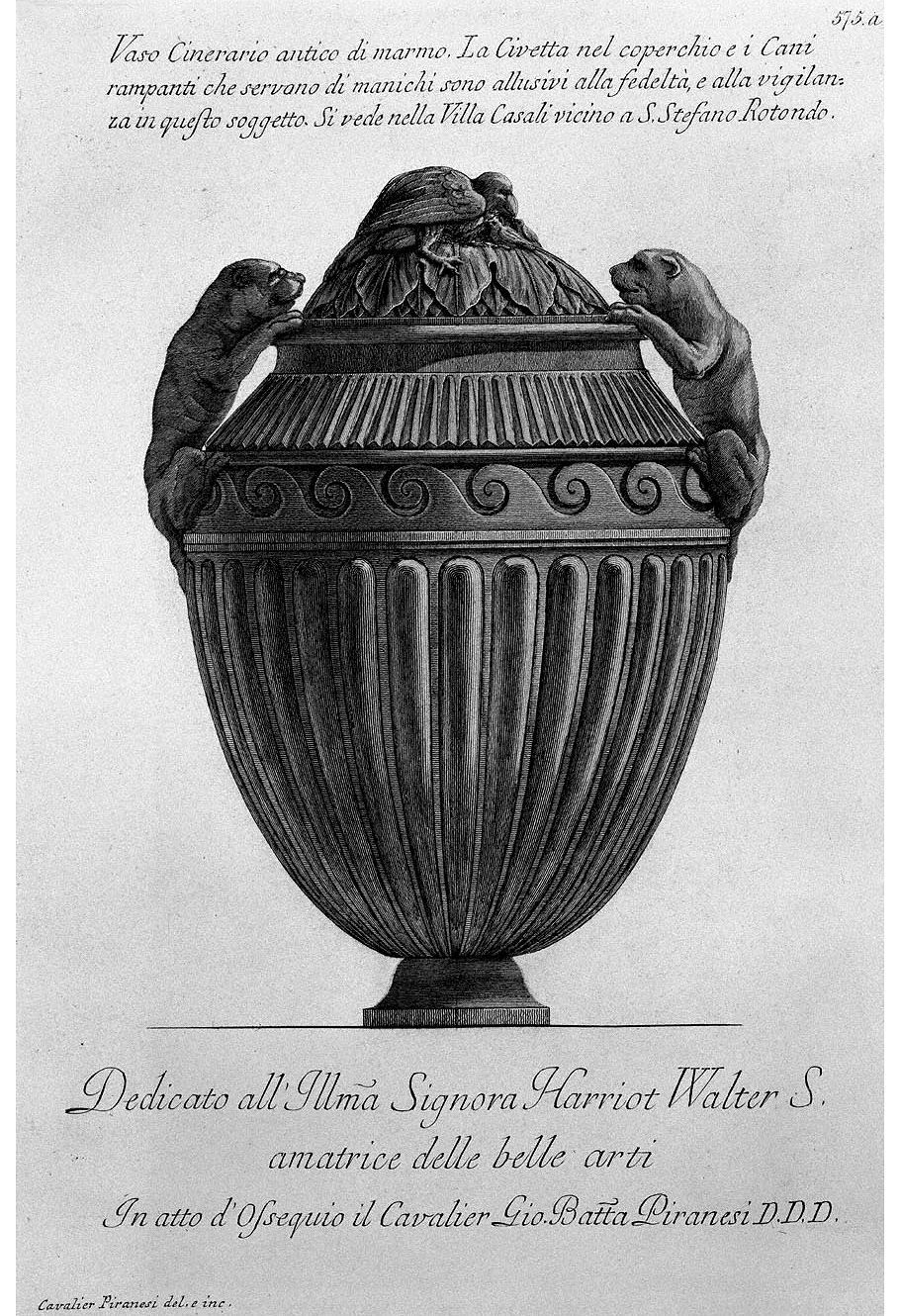
Dedicated to the Ill(ustrissi)ma Signora Harriot Walter S. lover of the fine arts
In deed of respect the Cavalier Gio. Batt(ist)a Piranesi D. D. D.
Ancient cinerary vase in marble. The Owl in the lid and the Rampant Dogs serving as handles allude to fidelity and vigilance in this subject. It can be seen in the Villa Casali near S. Stefano Rotondo.
Cavalier Piranesi delineated and engraved
24-25 y.o. Francesco Piranesi 1783
Il teatro di Ercolano
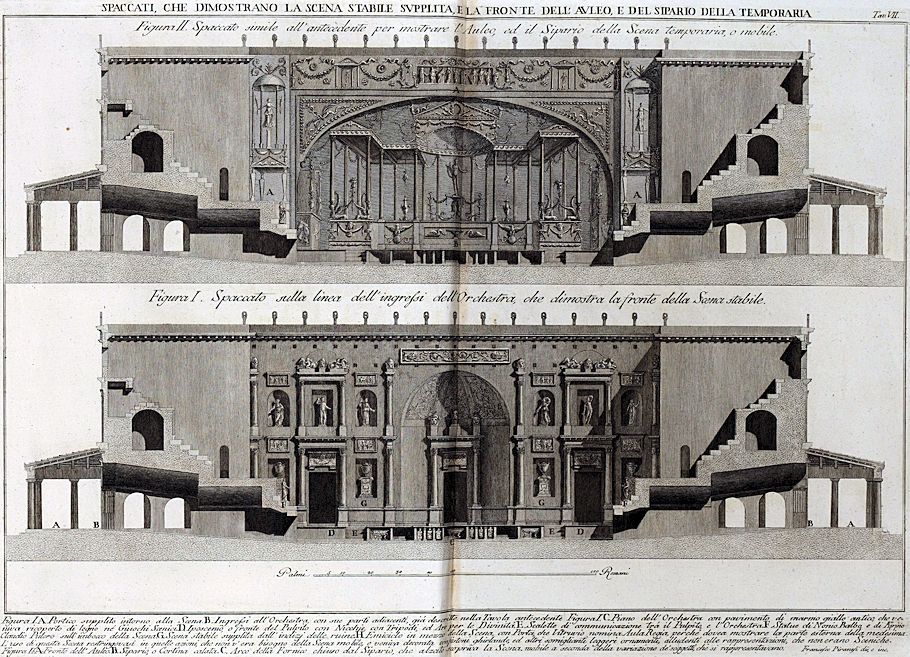
Sections, showing the stably substituted scene, and the front of the auditorium, and the curtain of the temporaria
Figure I. Section on the line of the entrance to the Orchestra, showing the front of the stable scene.
Figure II. Section similar to the previous one to show the Hall and the Curtain of the Temporaria or mobile Scene.
Figure I. A. Portico supplied around the Scene. B. Entrances to the Orchestra, with its adjacent parts, already described in the previous Table Figure I. C. Piano of the Orchestra with antique yellow marble floor, which was covered with wood or Scenic Playgrounds. D. Hyposcenium, or front of the pulpit with niches with tripods, and ares for the deities. E. Communication ladders between the Pulpit and the Orchestra. F. Statues of Nonius Balbus and Appius Claudius Pulcro at the entrance to the Scena. G. Stable scene made up for by clues from the ruins. H. Hemicycle in the middle of the Scene, with Door, which Vitruvius names Aula Regia, because it had to show the external part of the same. The use of this Scena was restricted to those actions, that there was no need for the mobile Scene, and it was decorated with festoons, garlands, and other similar light ornaments, alluding to the representations, which were not Scenics.
Figure II. A. Front of the Auleo. B. Curtain, or curtain lowered. C. Arco della Fornice closed by the curtain, which when raised revealed the mobile Scene according to the variation of the subjects, which were represented.
Francesco Piranesi, delineated and engraved.
23 March 1784
1782: A contract between Francesco Piranesi and Desprez provides a detailed account of their financial arrangements.
1783: Advertisement announcing a series of aquatint engravings after drawings by Desprez.
1784: Gustav III meets Louis-Jean Desprez in his workshop, and quickly offered him the directorship of decorations for his royal theatre in Stockholm. Moving to Sweden in 1784, Desprez was entrusted with the supervision of the works of the royal palace of Haga in 1787 and became the first architect of the king in 1788.
45-46 y.o. Francesco Piranesi 1804
Calcography of the Piranesis
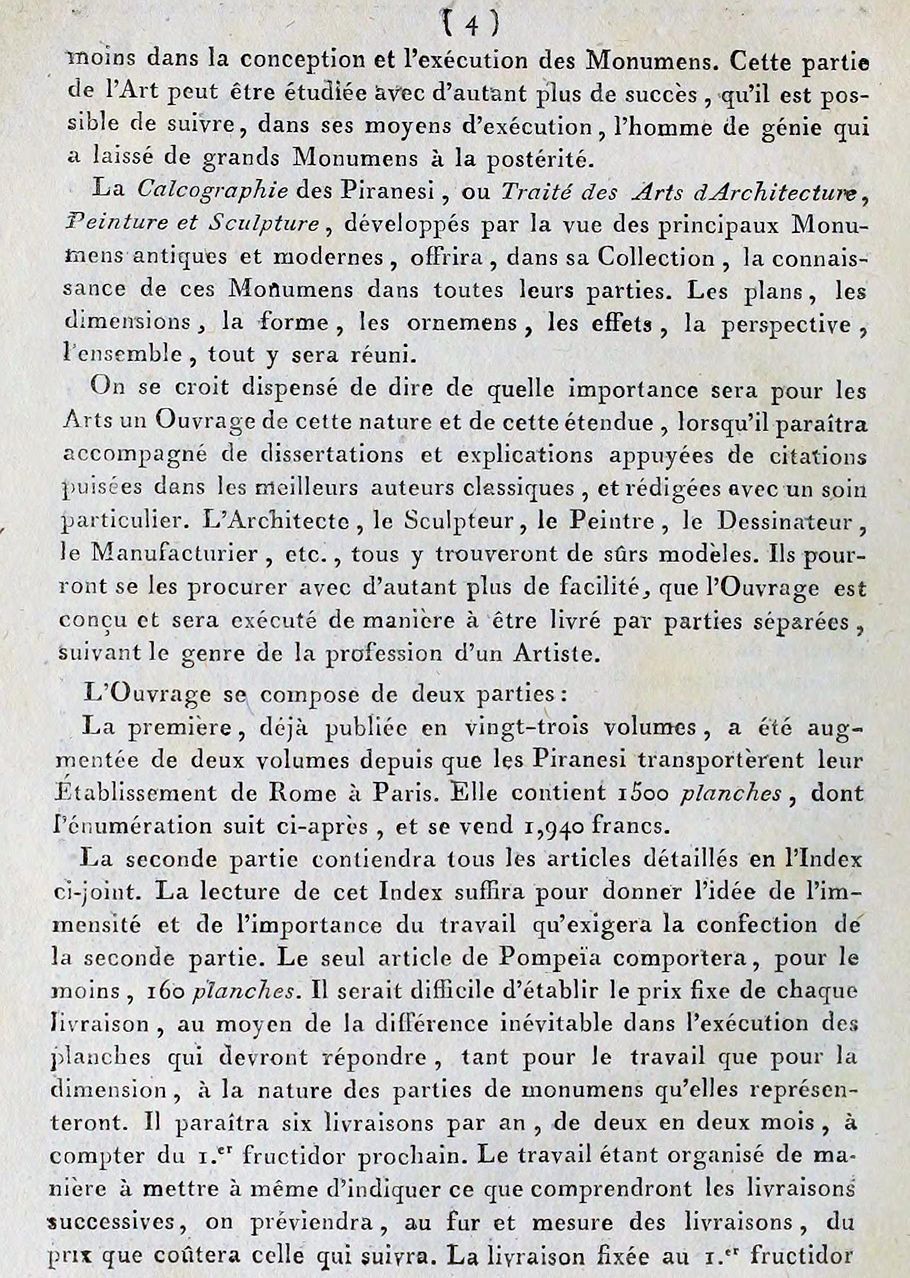
The Calcography of the Piranesis, or Treatise of the Arts of Architecture, Painting and Sculpture developed by the view of the main ancient monuments and modern, will offer, in its Collection, the knowledge of these Monuments in all their parts. The plans, dimensions, form, ornaments, effects, perspective, the whole, everything will be brought together.
We feel exempted from saying of what importance will be for the Arts a Work of this nature and of this extent, when it appears accompanied by dissertations and explanations supported by quotations drawn from the best classic authors, and written with particular care. The Architect, the
Sculptor, Painter, Draftsman, Manufacturer, etc., everyone will find sure models there. They will be able to obtain them with all the more ease, that the Work is designed and will be executed in such a way as to be delivered in separate parts, according to the type of profession of an Artist.
The book consists of two parts:
The first, already published in twenty-three volumes, has been increased by two volumes since the Piranesis moved their Establishment from Rome to Paris. It contains 1500 plates, the enumeration of which follows below, and sells for 1,940 francs.
The second part will contain all the articles detailed in the attached Index. The reading of this Index will suffice to give the idea of ??the immensity and the importance of the work required to make the second part. The only article from Pompeďa will include, at the very least, 160 plates. It would be difficult to establish the fixed price of each delivery, by means of the inevitable difference in the execution of the boards that will have to respond, both for the work only for the size, to the nature of the parts of monuments that they will represent. It will appear six issues a year, two in two months, at counting from the next 1 fructidor. The work being organized in such a way as to make it possible to indicate what the successive deliveries will include, we will warn, as deliveries are made, of the price that will cost the one that will follow. The delivery set for 1 Fructidor will consist of 12 boards; the price will be 6 cliaqiie francs. We will then publish the text of the first part, which will be delivered by articles corresponding to the boards which will have appeared, and the price of which will be fixed at that time.
23 March 1812 Monday
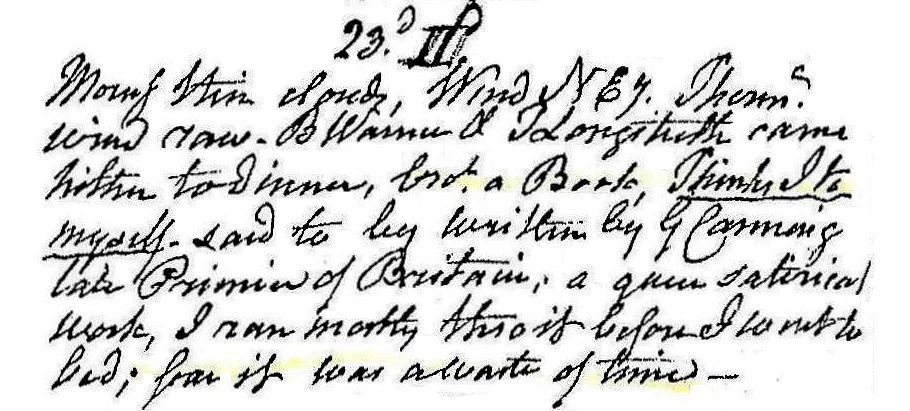
Morning thin clouds, wind NEerly. Therm. [blank]. Wind raw. B. Warner and T. Longstreth came hither to dinner, brought a book, Thinks I To Myself, said to be written by G. Carming, late Premier of Britain, a quus[?] satirical work. I ran mostly through it before I went to bed; fear it was a waste of time.
23 March 2007
...and speaking of random tangents
Miers Fisher's Ury journals (1804-1819) are voluminous. Quite overwhelming. I might go blind. But, if you want to know what direction the wind was blowing where I live on any given day two hundred years ago, I can now tell you. We're at a high point here, 200 to 220 feet up. I have a feeling the winds are blowing the same way again.
1804, some day in January: "Killed 12 stags." I told you there're lots of deer around here, still.
Miers' last year at Ury, 1818, was fairly equally split between living at Ury and living in the City--108 Arch Street--back and forth very often. I'm pretty sure I know the route he took; I take it pretty often myself now. I love 'Indian' trails.
23 Dec 1818 "Left for Ury." 30 Dec 1818 "headed back the City."
Miers' last Christmas was spent at Ury, and he never made it back. He died mid-March 1819 at Arch Street, and kept his journal until his antepenult day.
Did you ever wonder why the even house numbers are on one side of the street and the odd house numbers are on the other side of the street? Well, as far as Philadelphia is concerned, it's because Miers Fisher made the suggestion while he was on the Common [City] Council 1789-1791. So 108 Arch Street in on the south side of the street and was back then between 5th and 6th Streets. That's right on axis with Independence Hall, and if the house were still there today, it would be right across the street from the U.S. Constitution Center. Location, location, location.
Held a letter in my hands today that was written in New Harmony, 11 August 1826. Helen Gregoroffsky Fisher had remarkably nice penmanship, as remarkable as her command of the English language. She was quickly responding to Redwood Fisher's letter that she received the day before. Held several of Redwood's letters in my hands today too. Specifically his supercargo letters--from Batavia, from Isle of France, from Cape of Good Hope.
I wonder if Miers Fisher ever though his journals would return to their location of origin.
23 March 2008
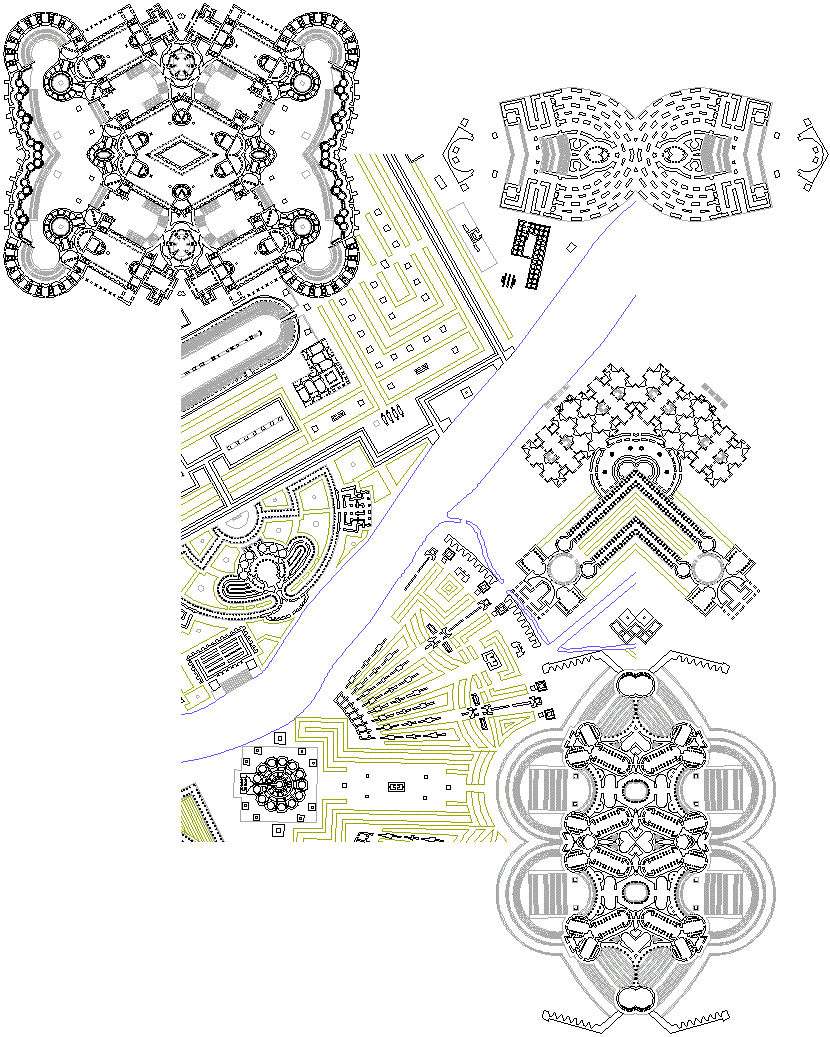
23 March 2023 Thursday
. . . . . .
|